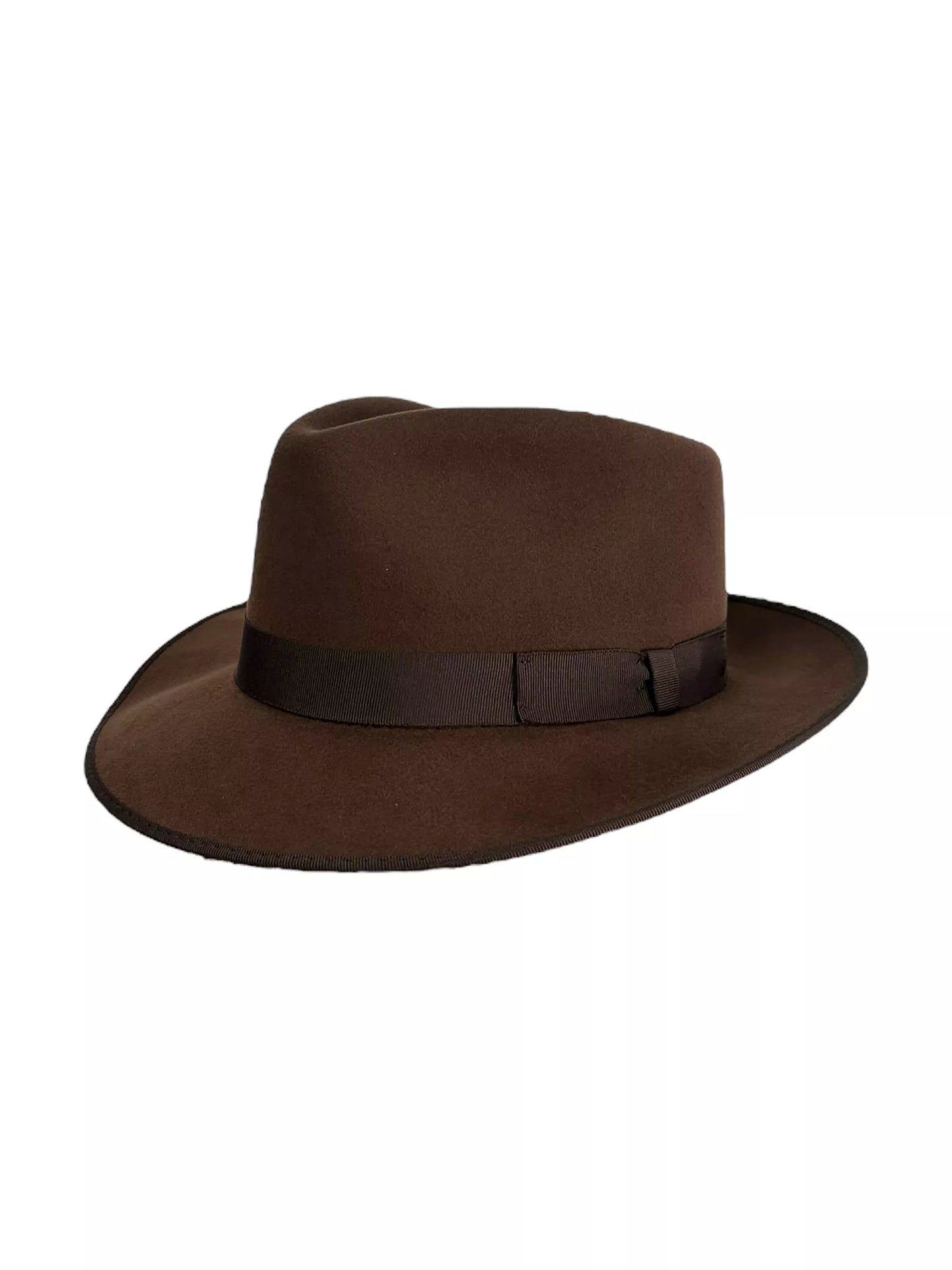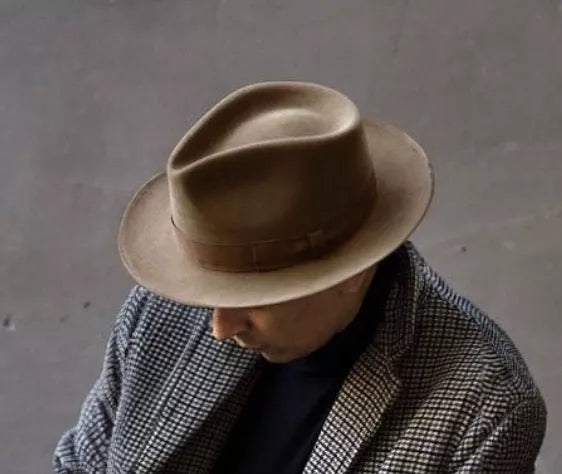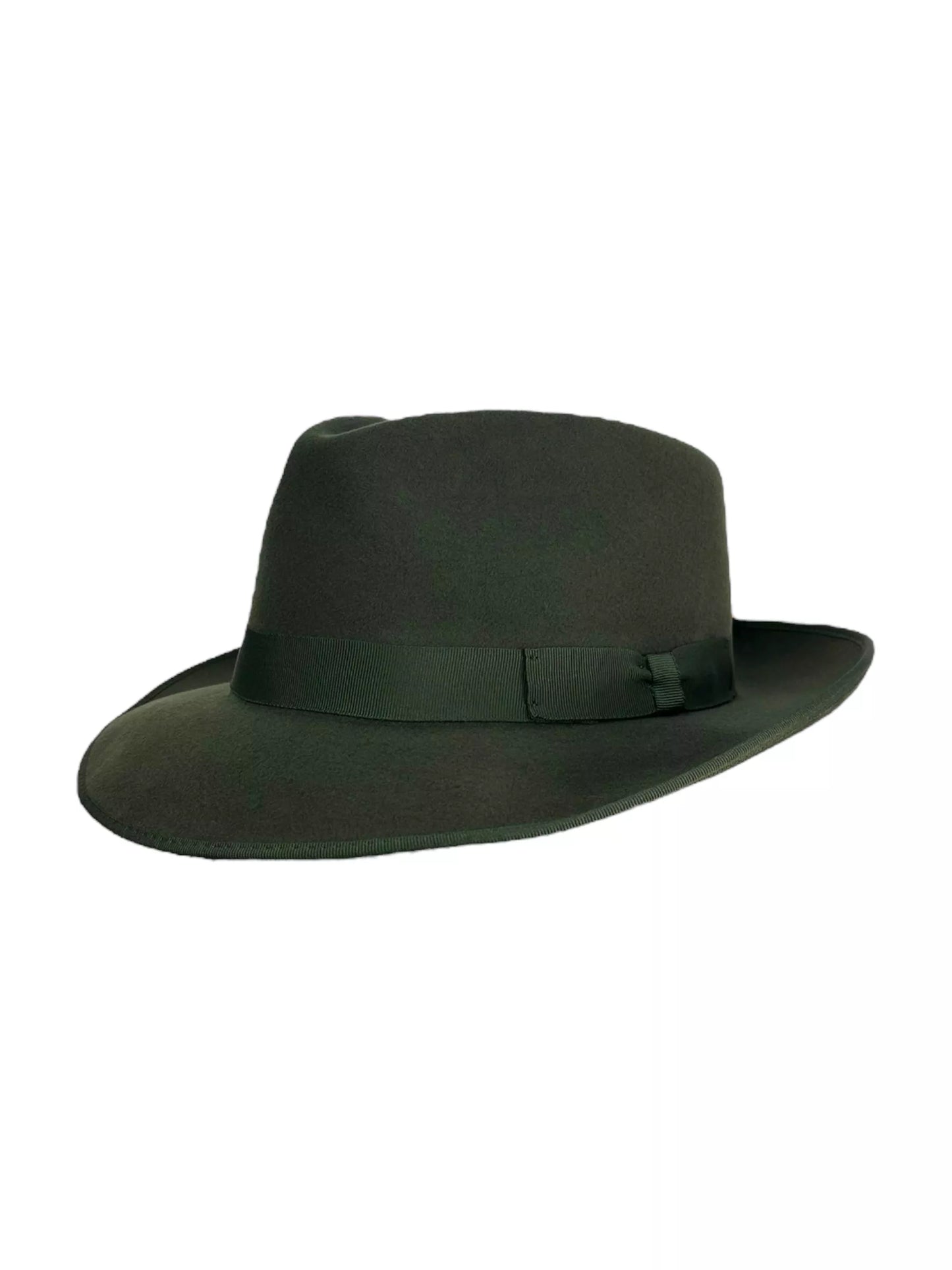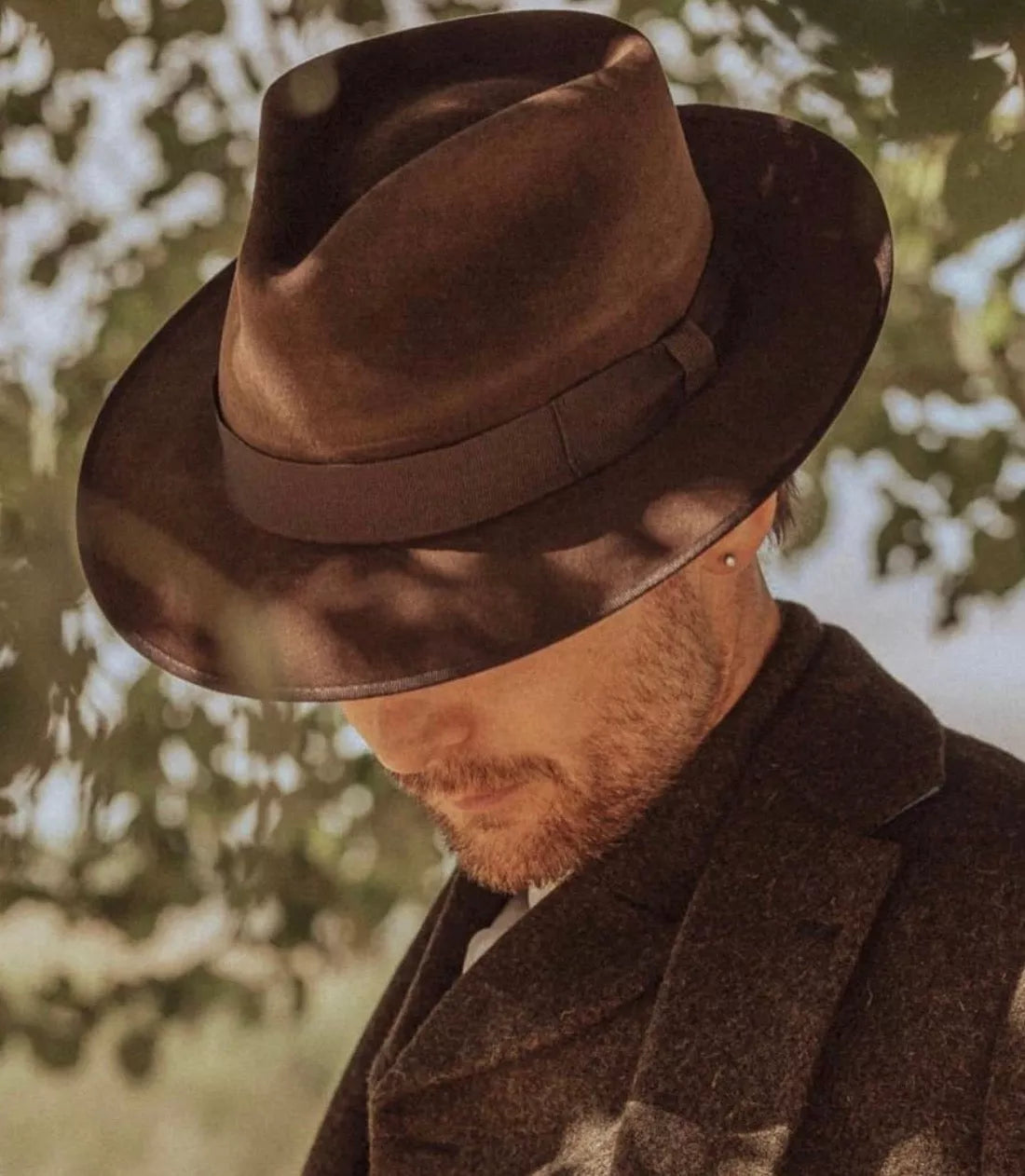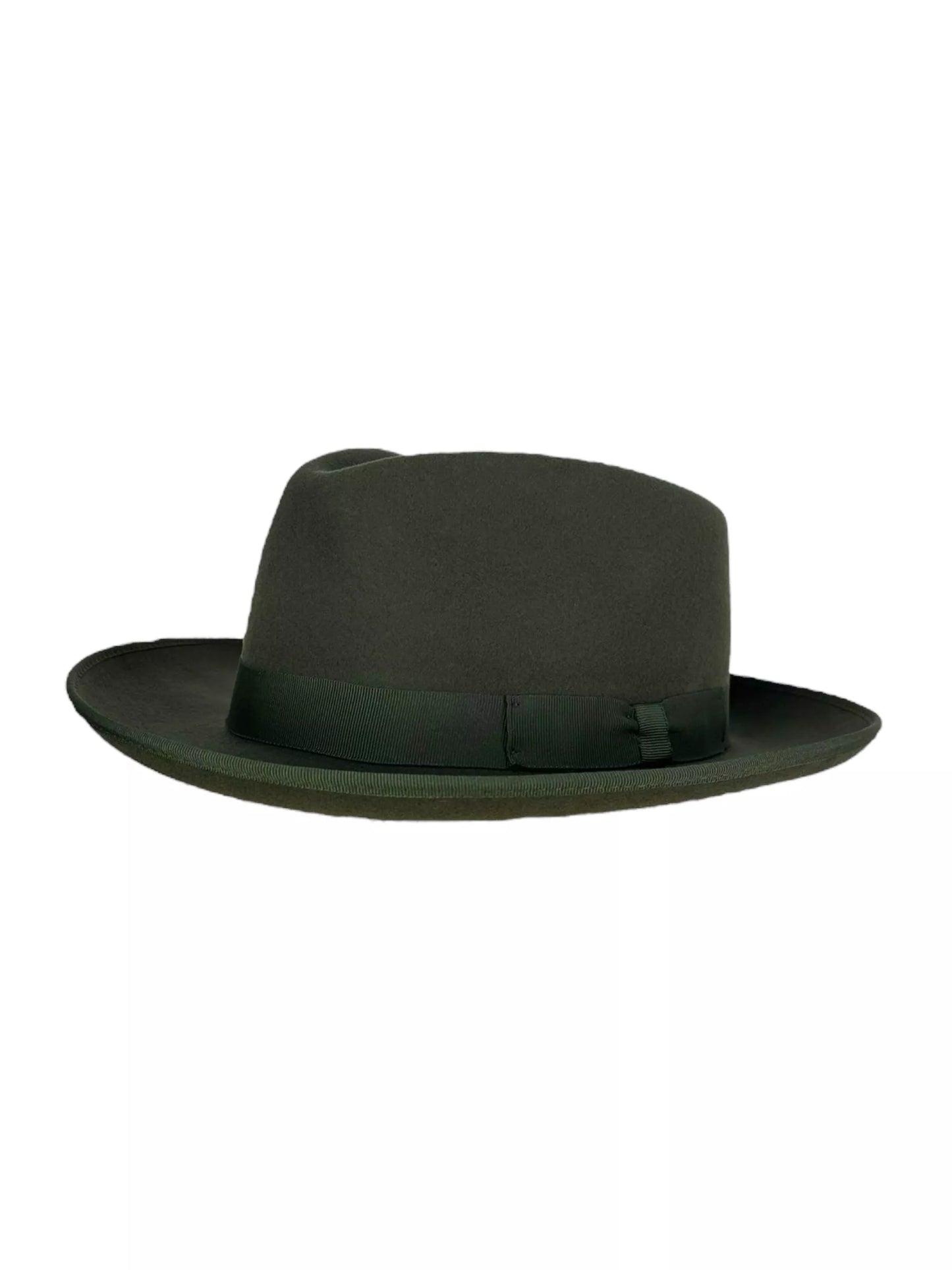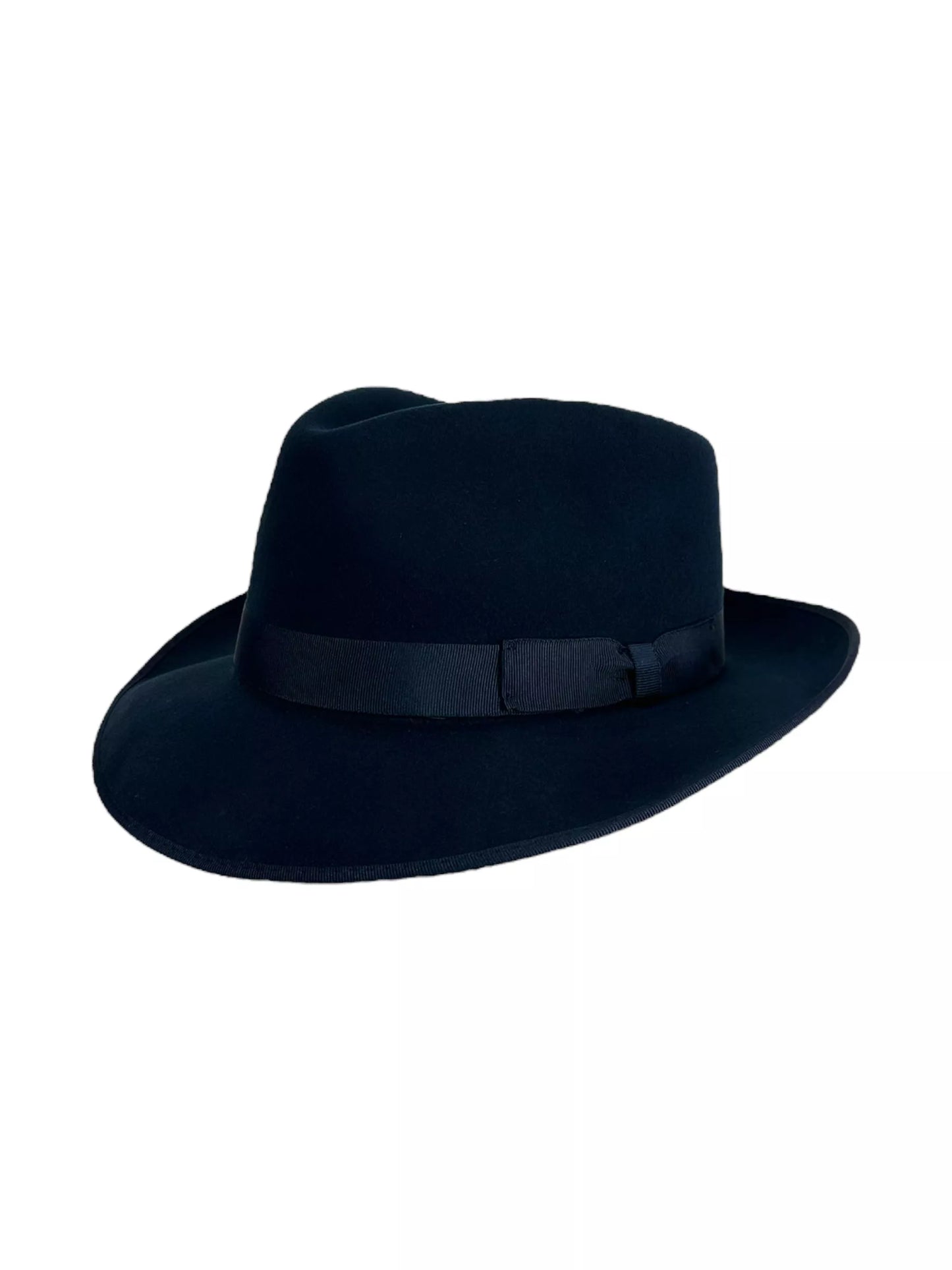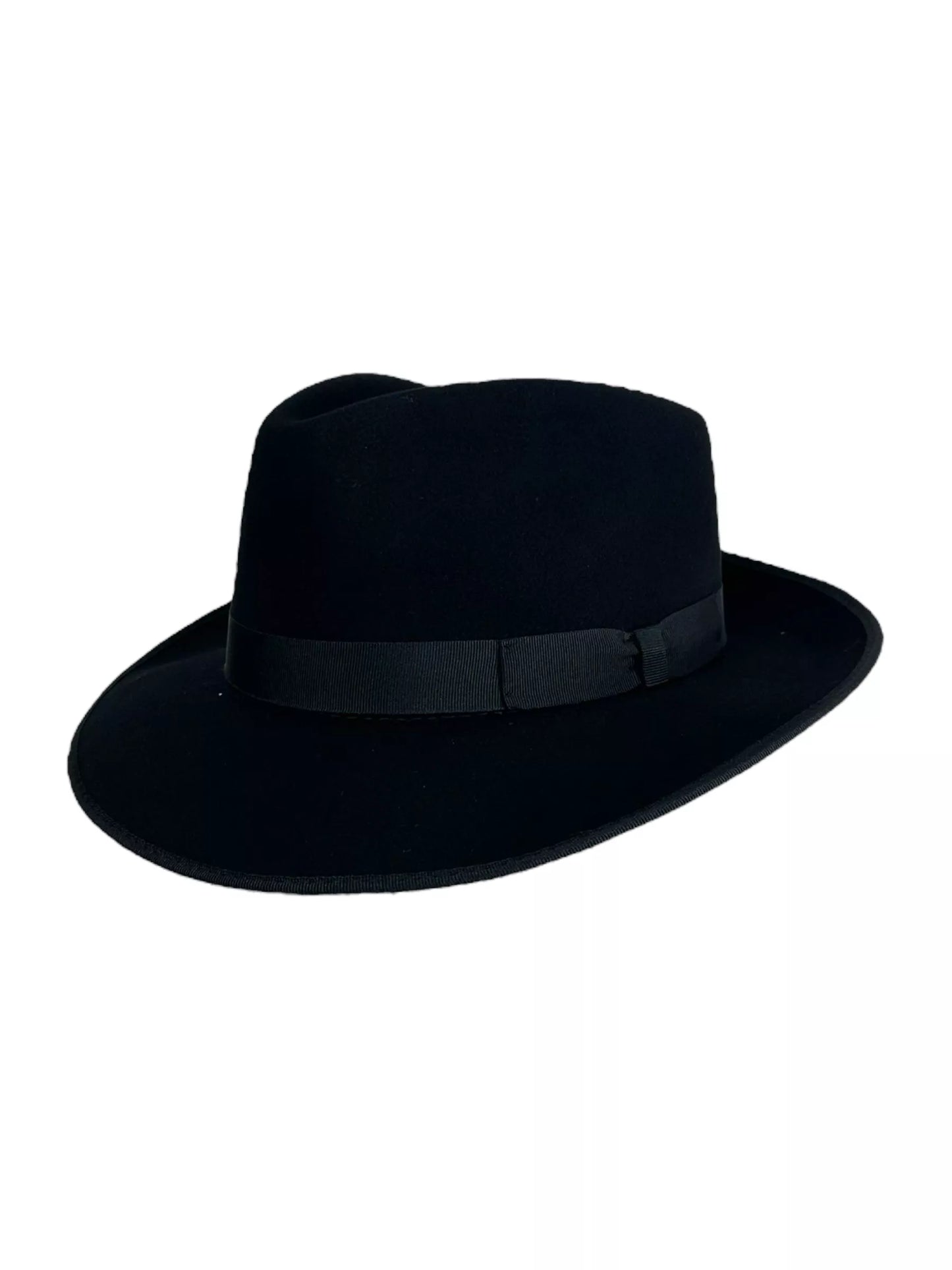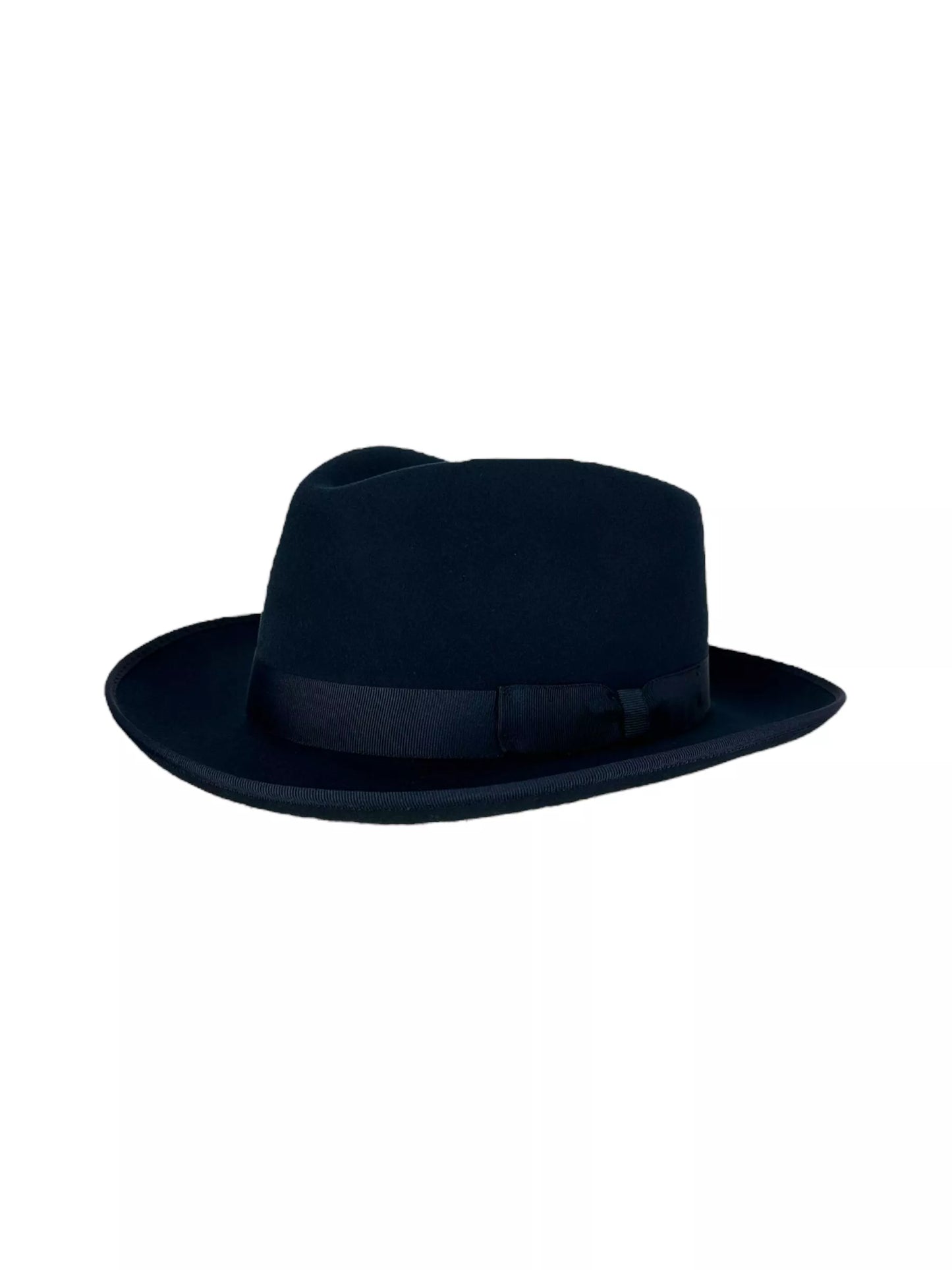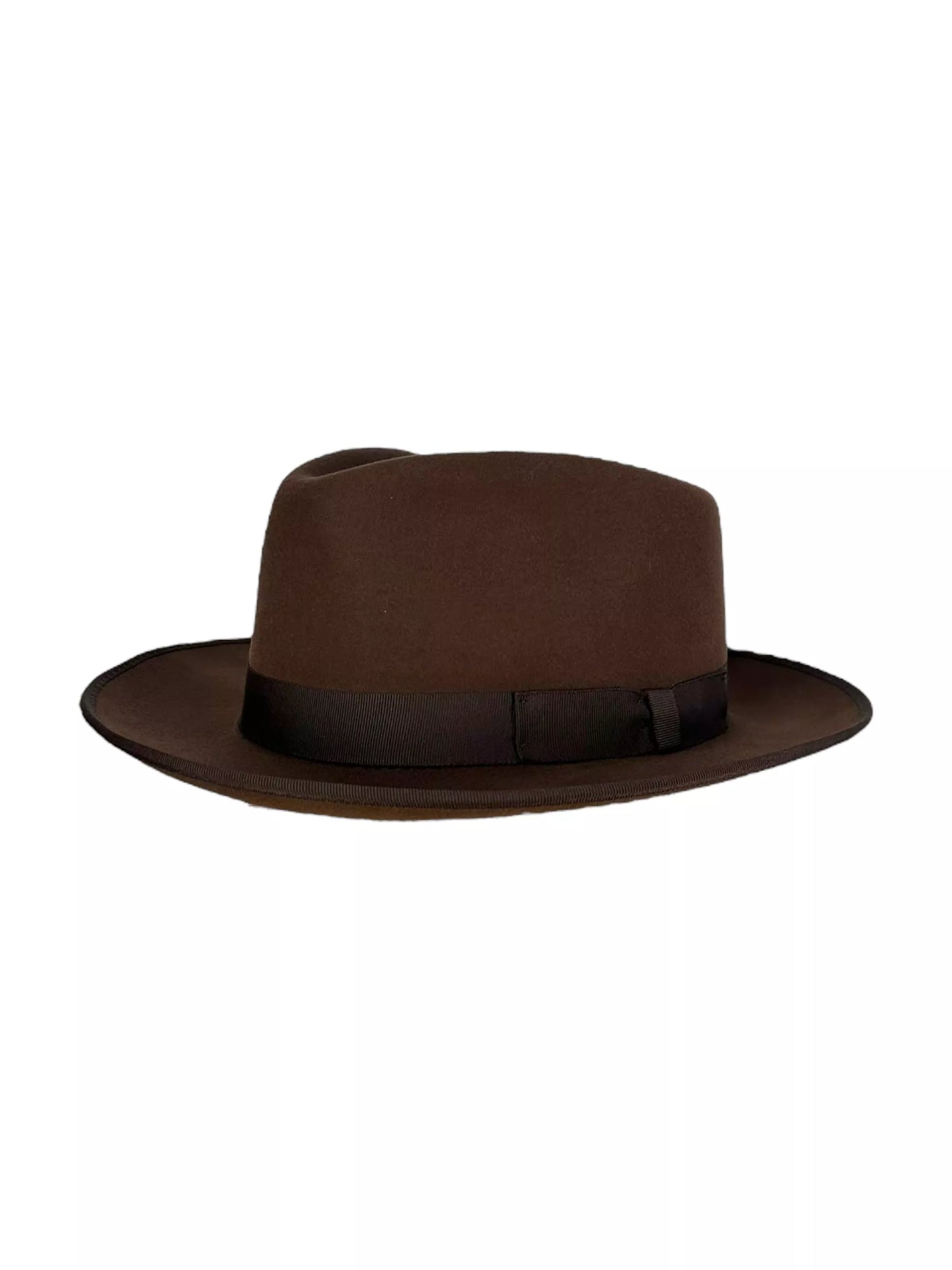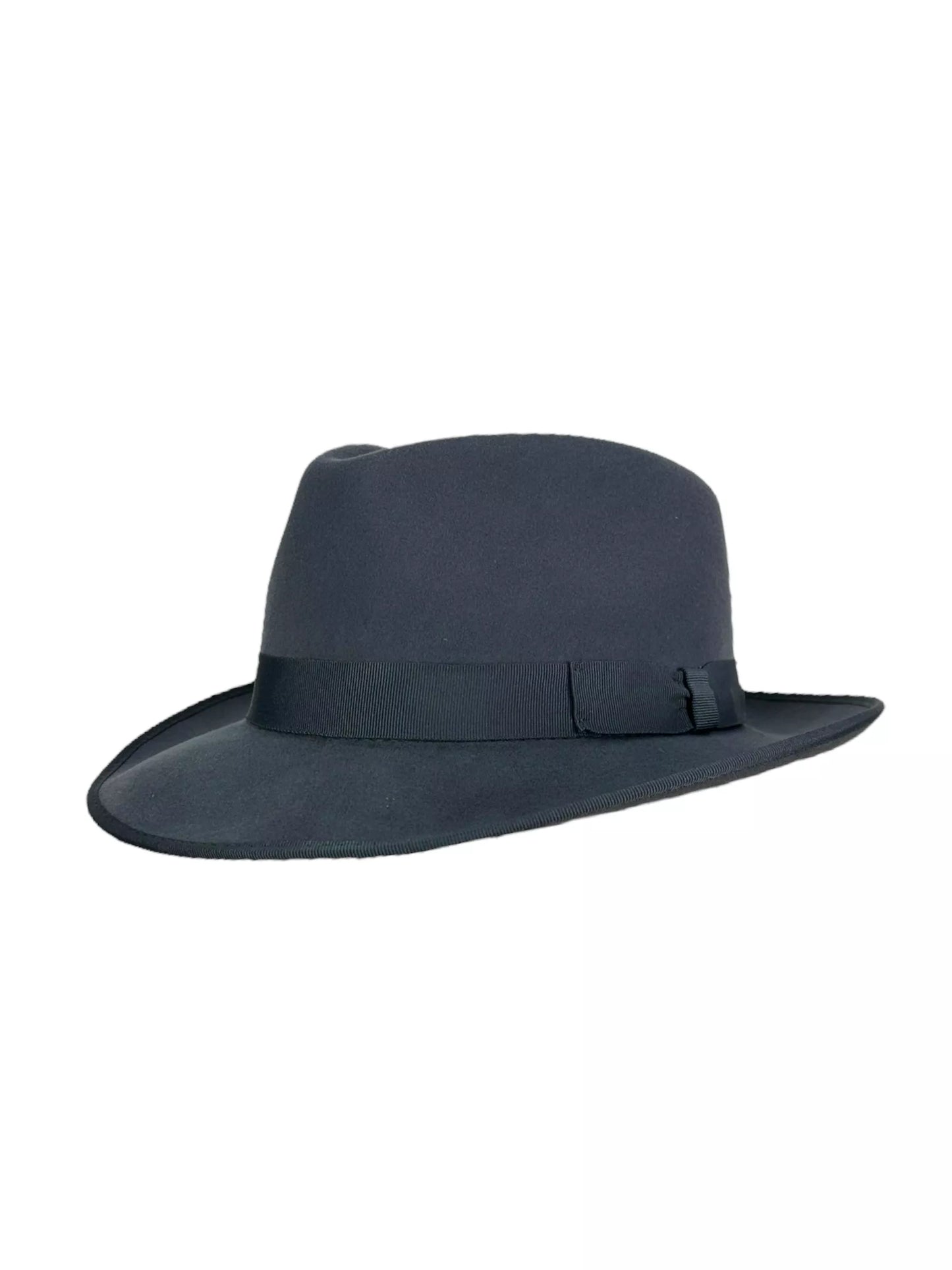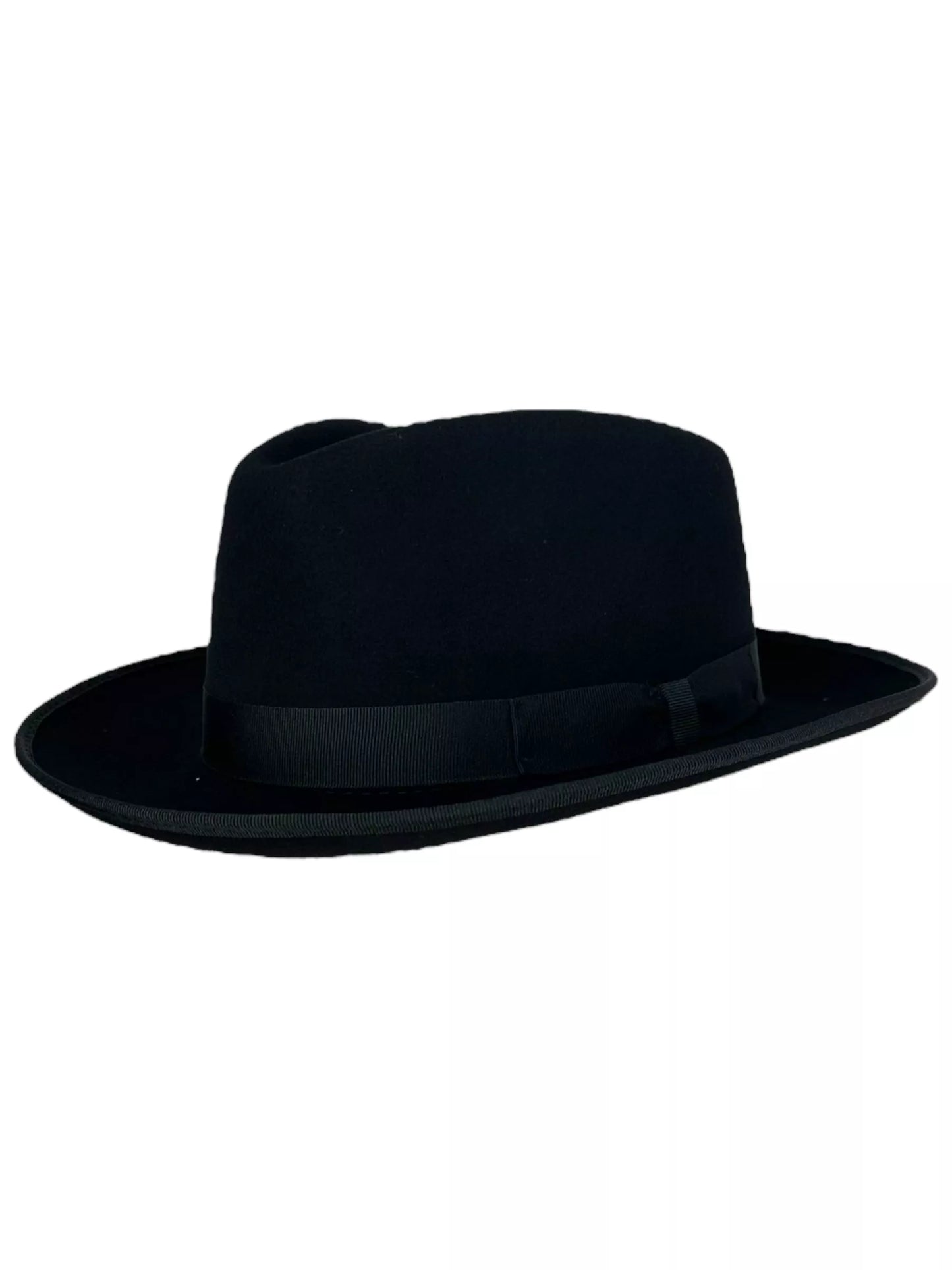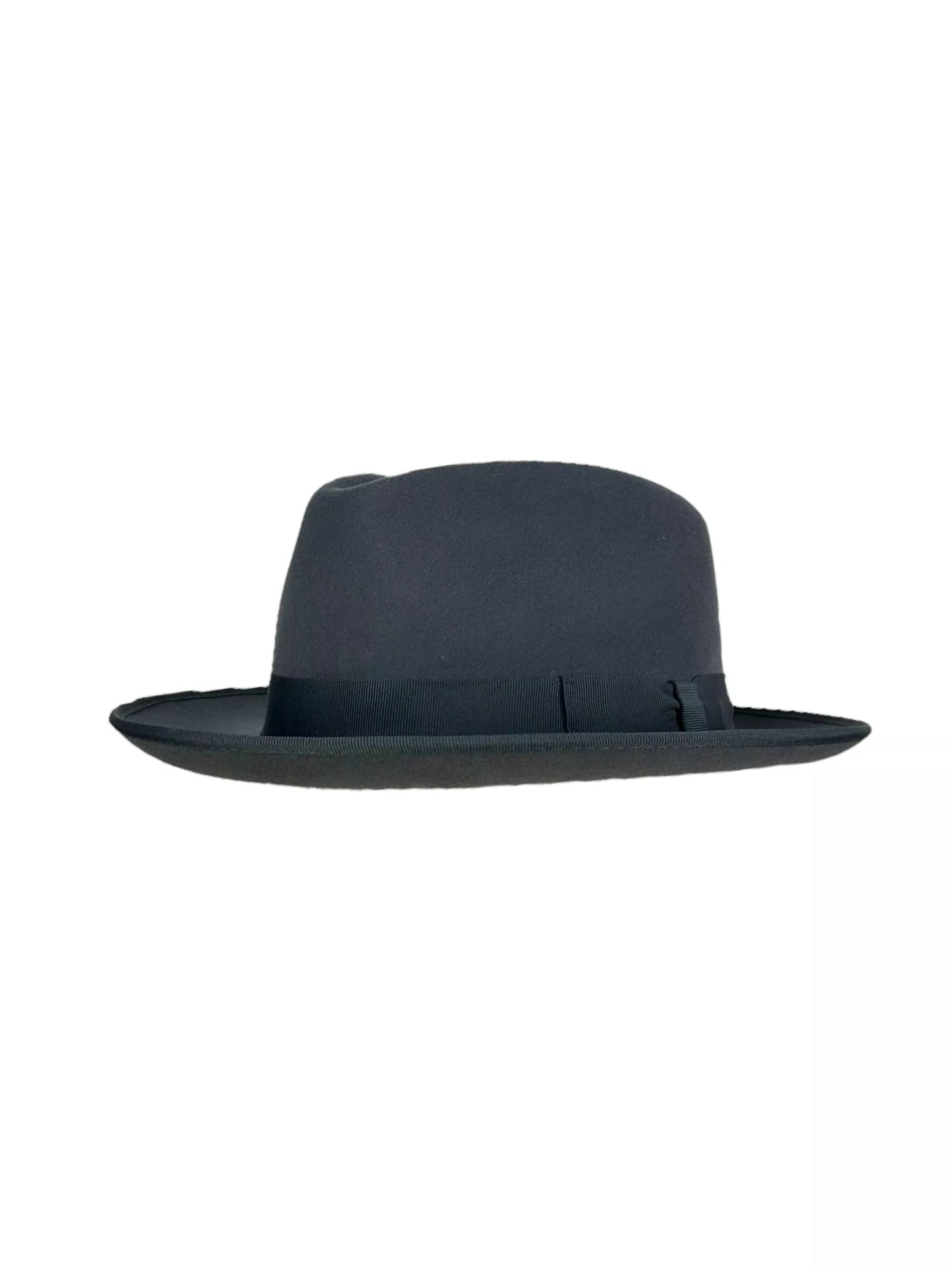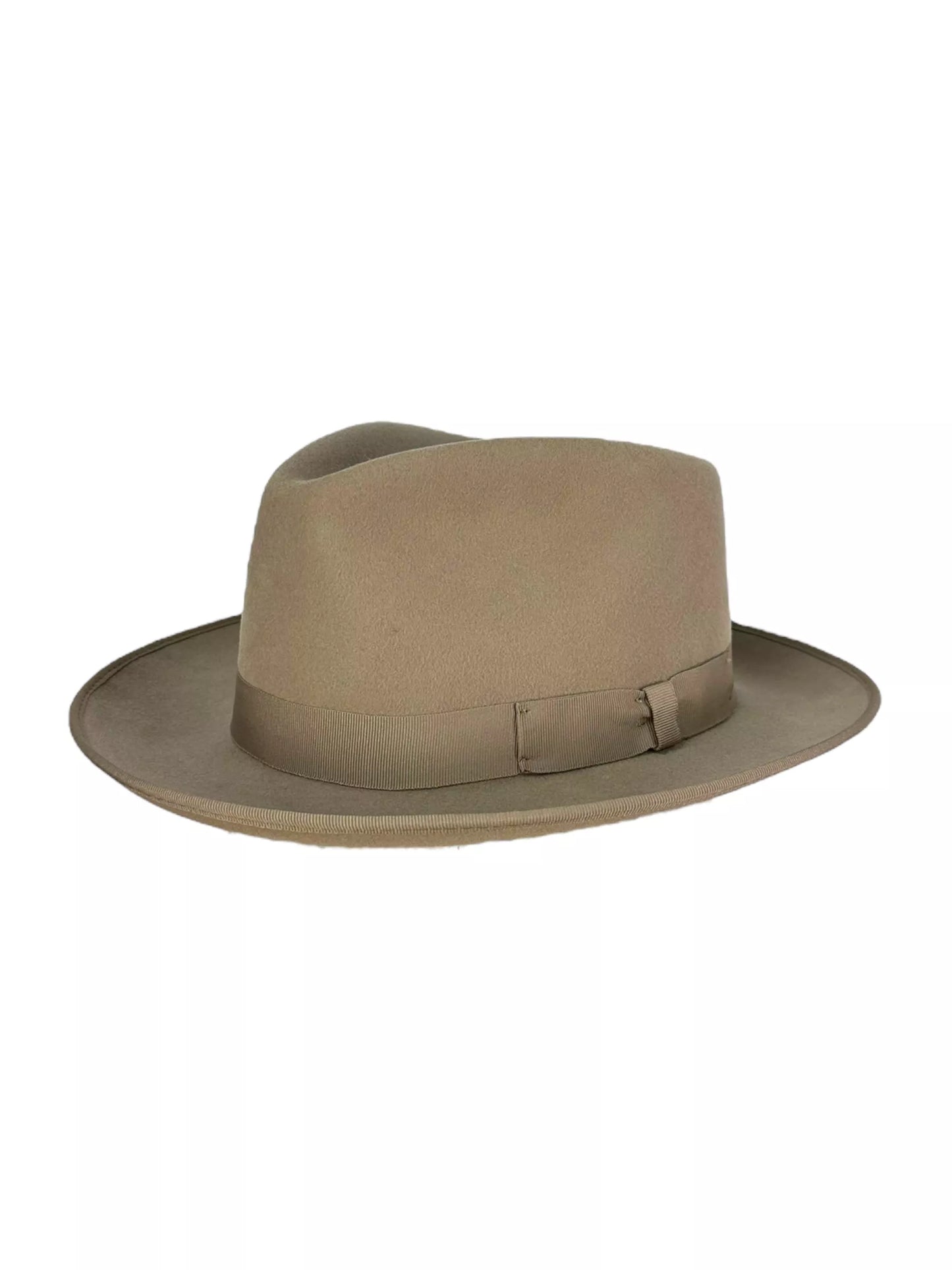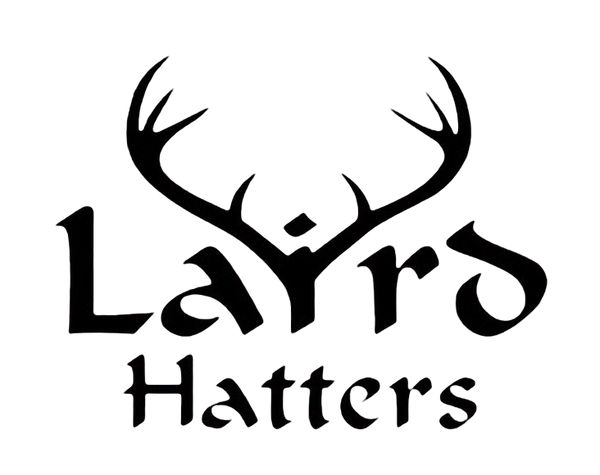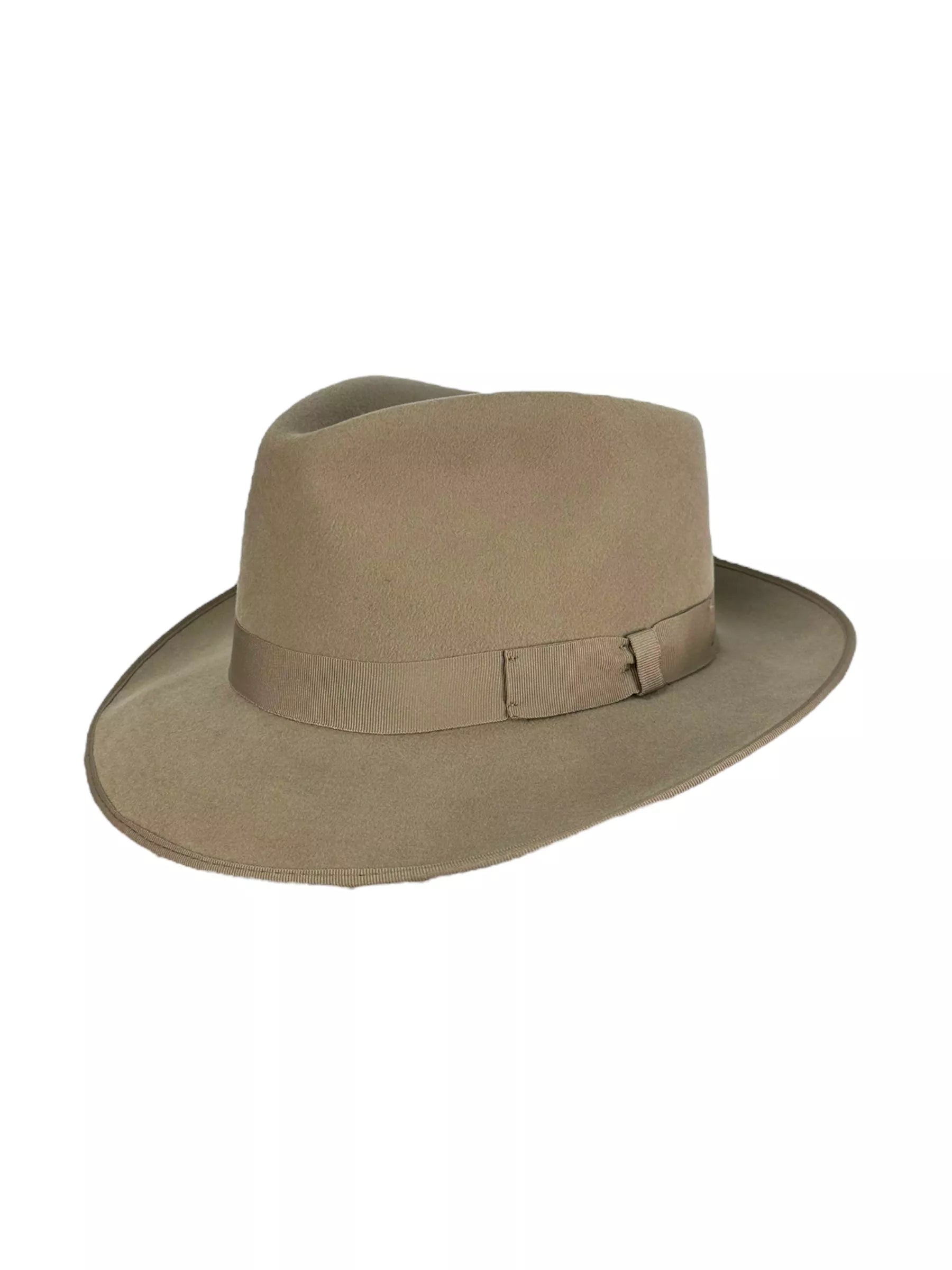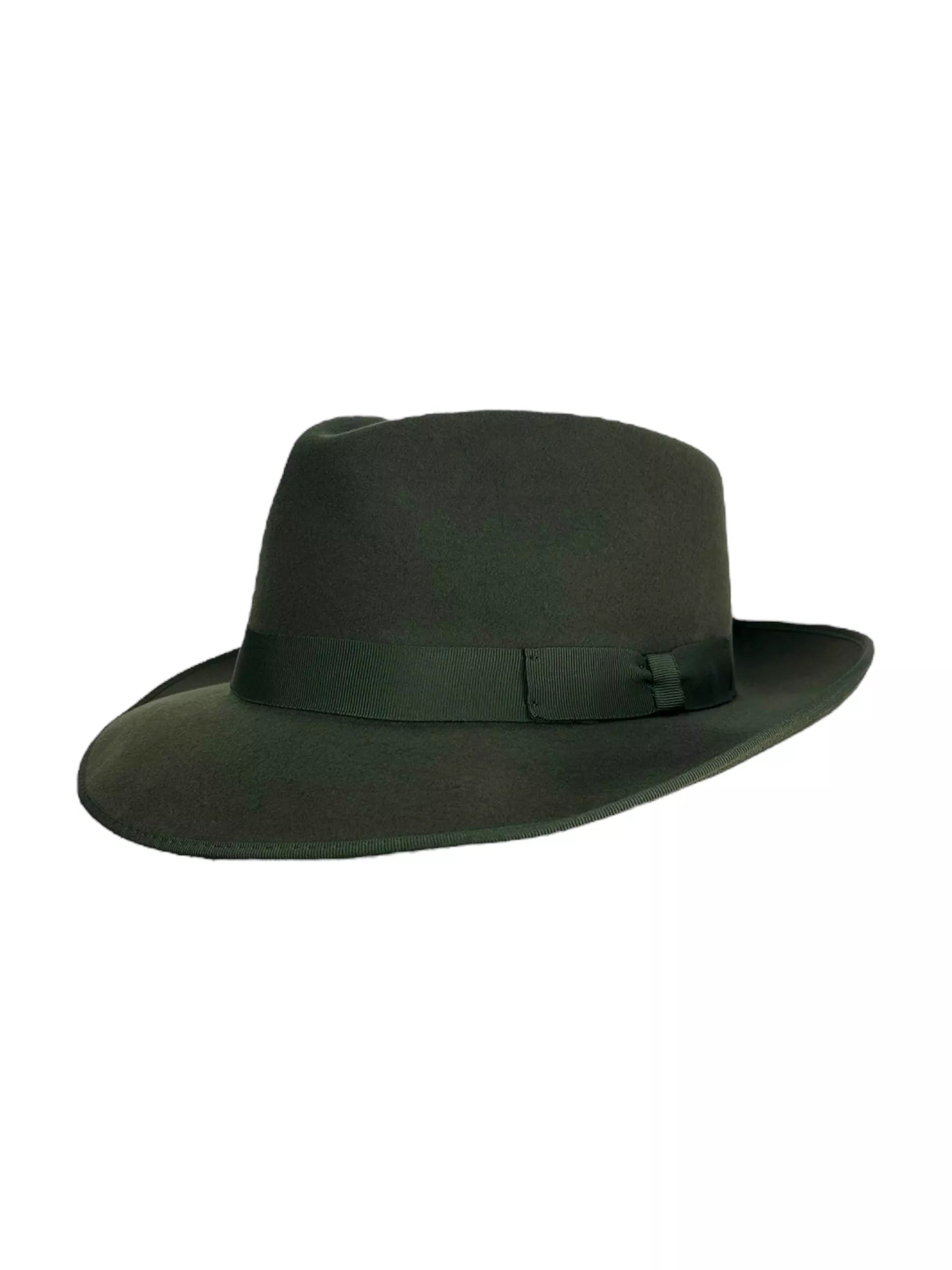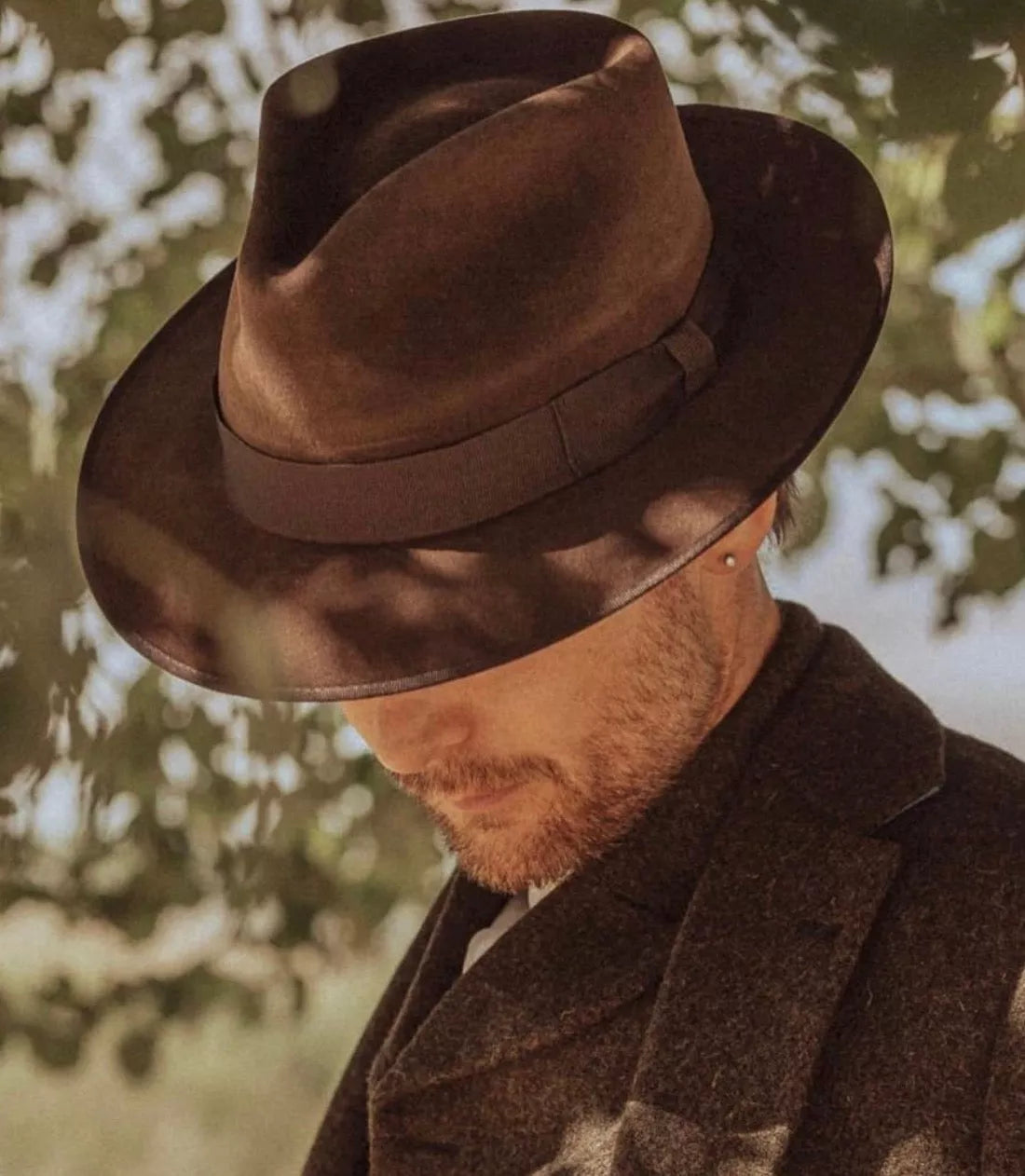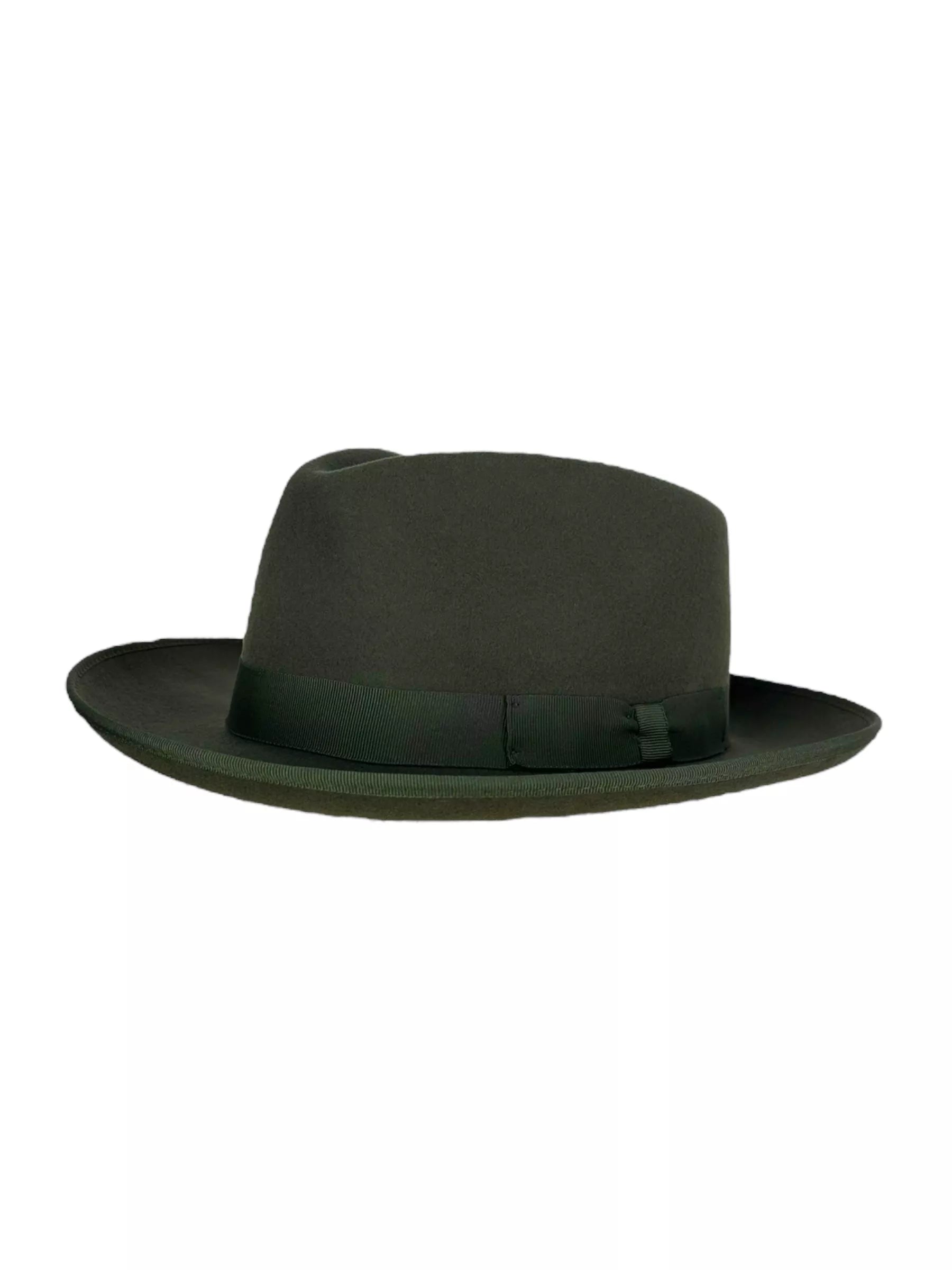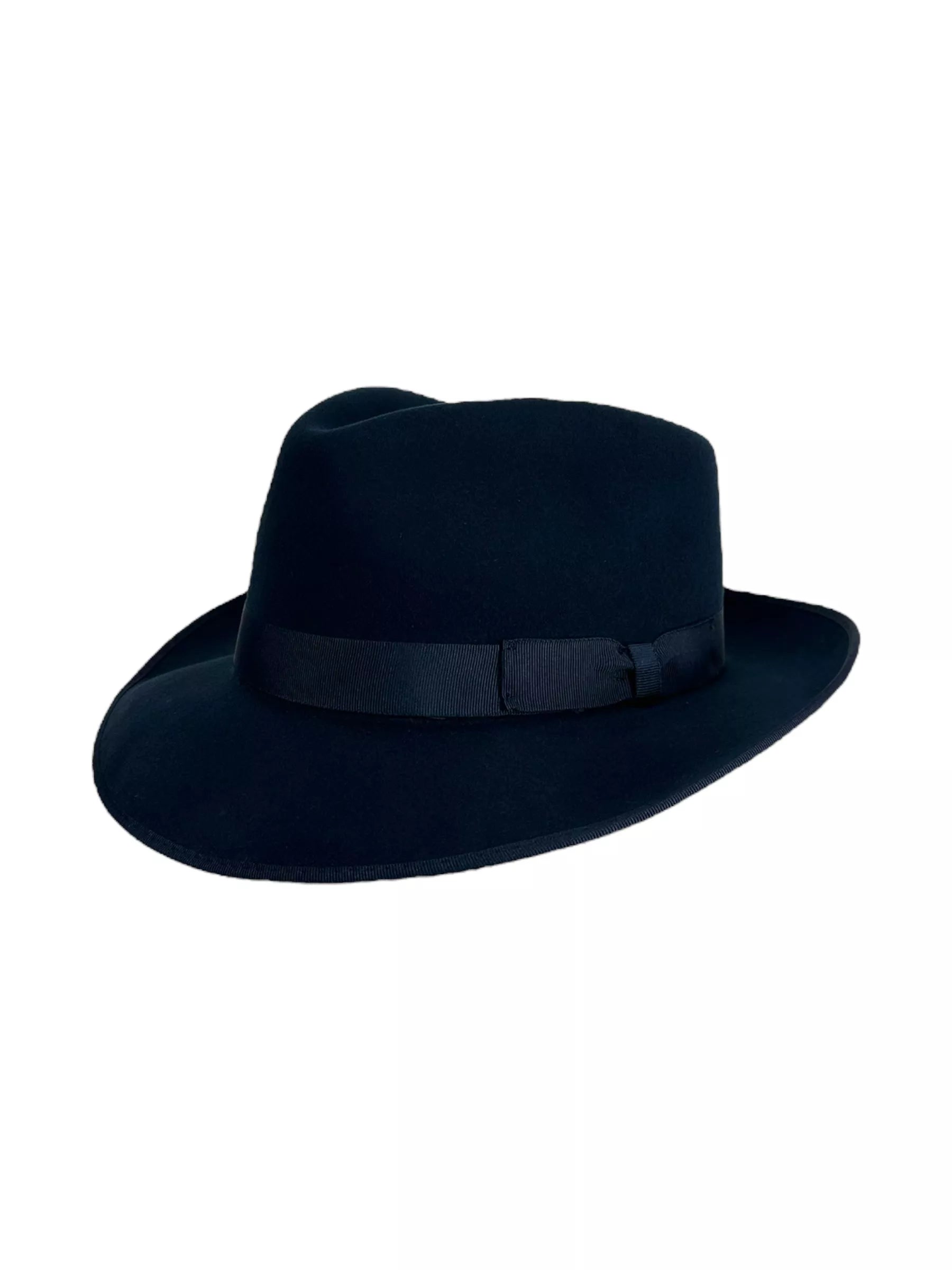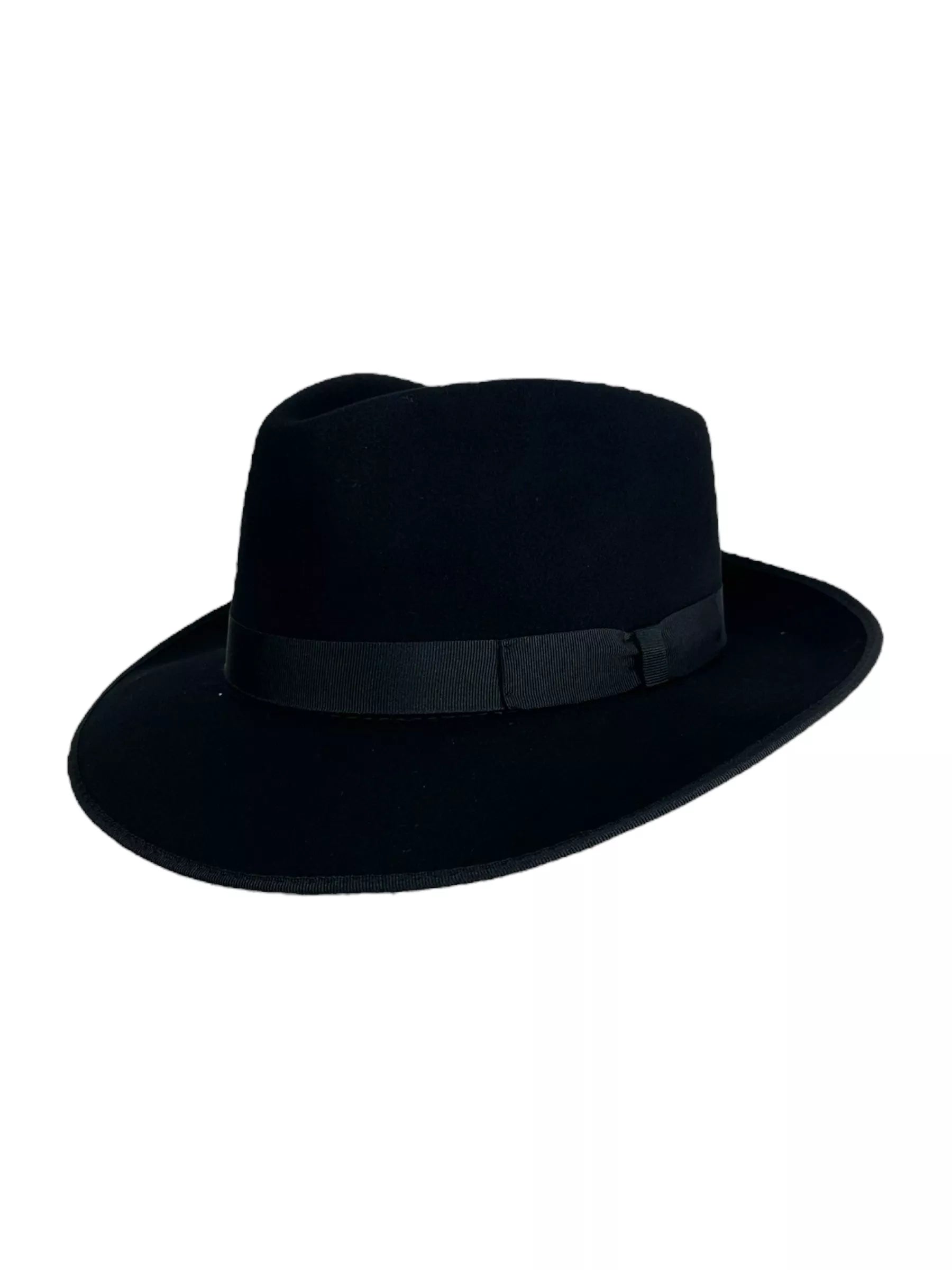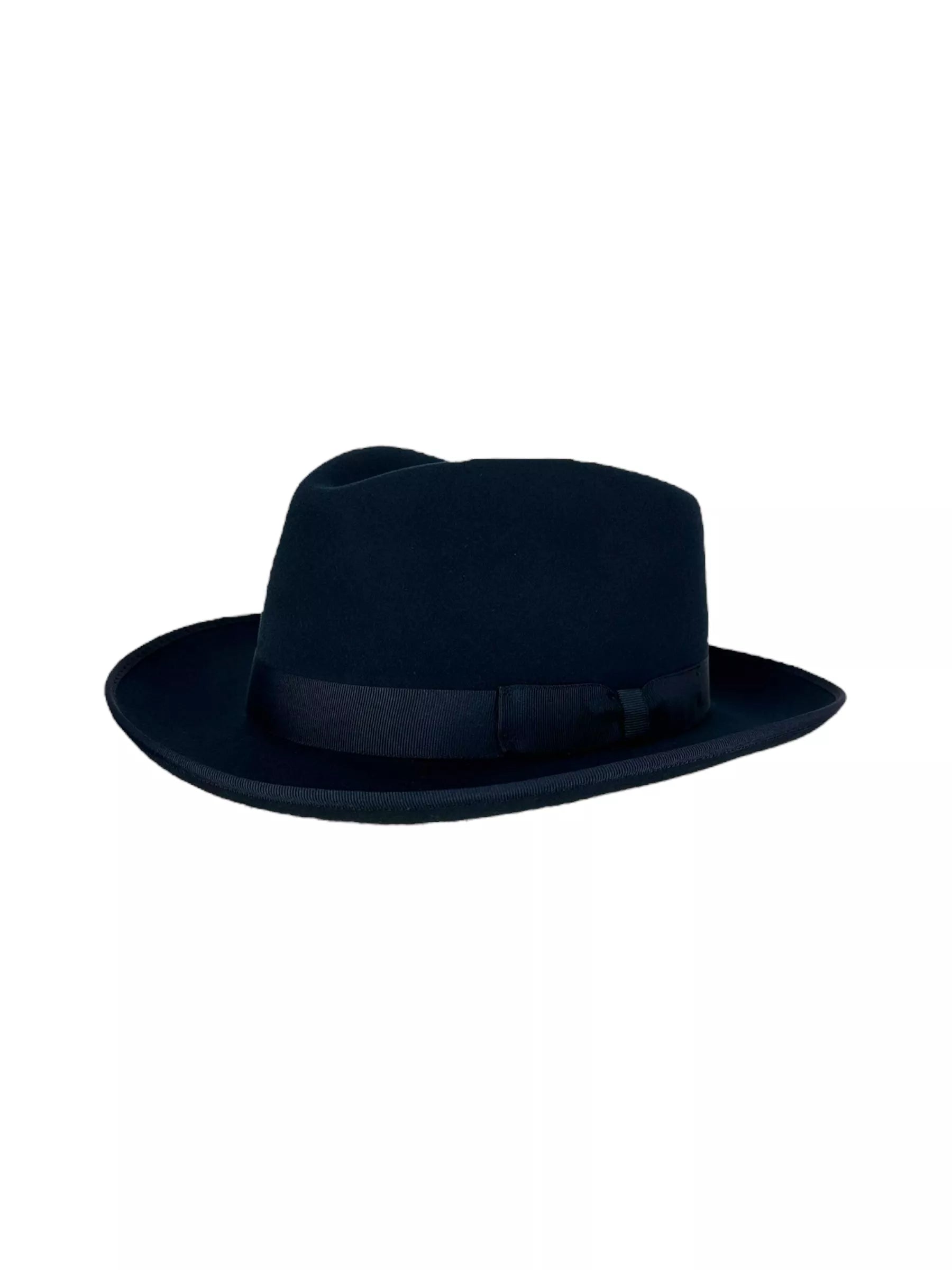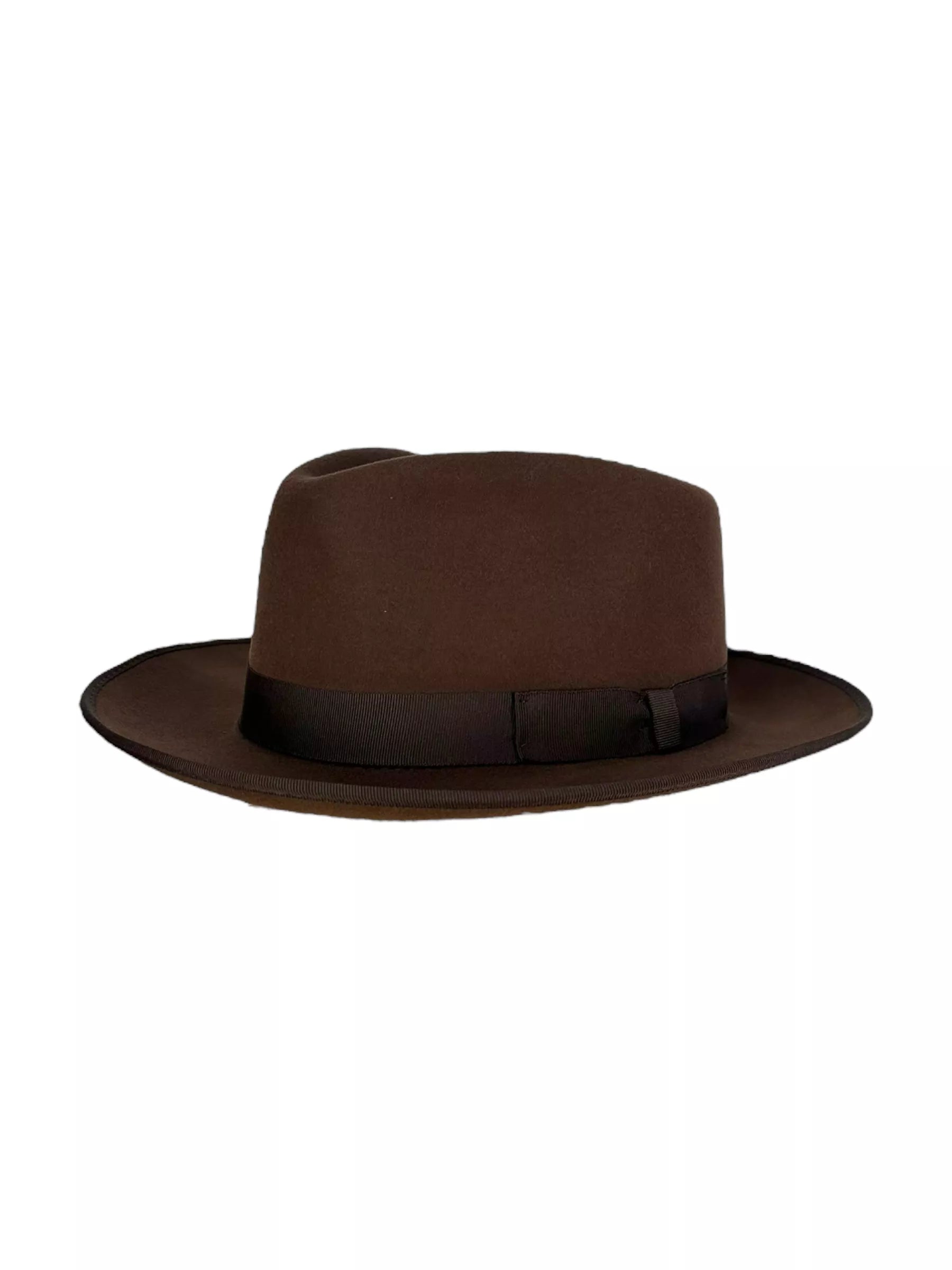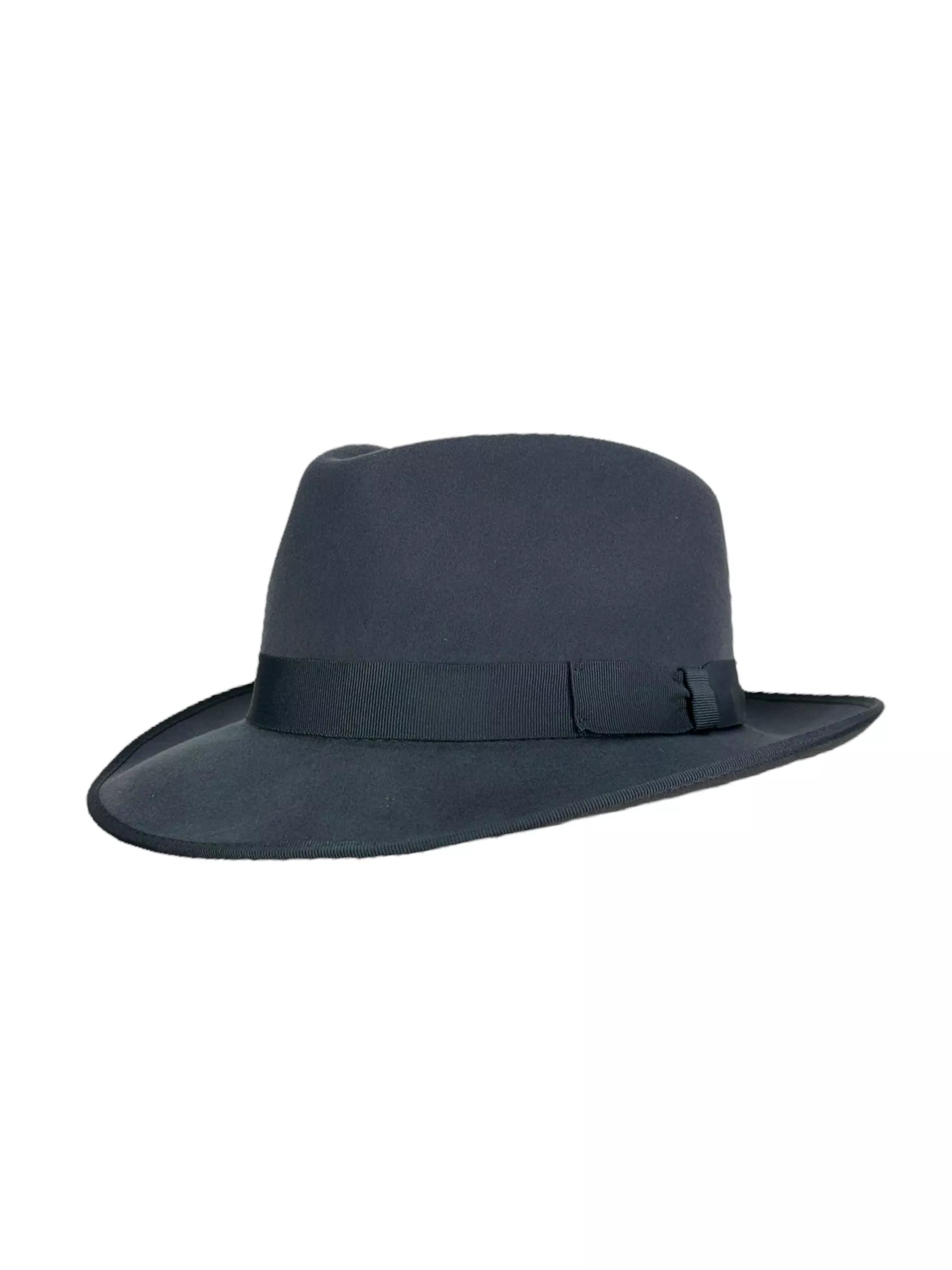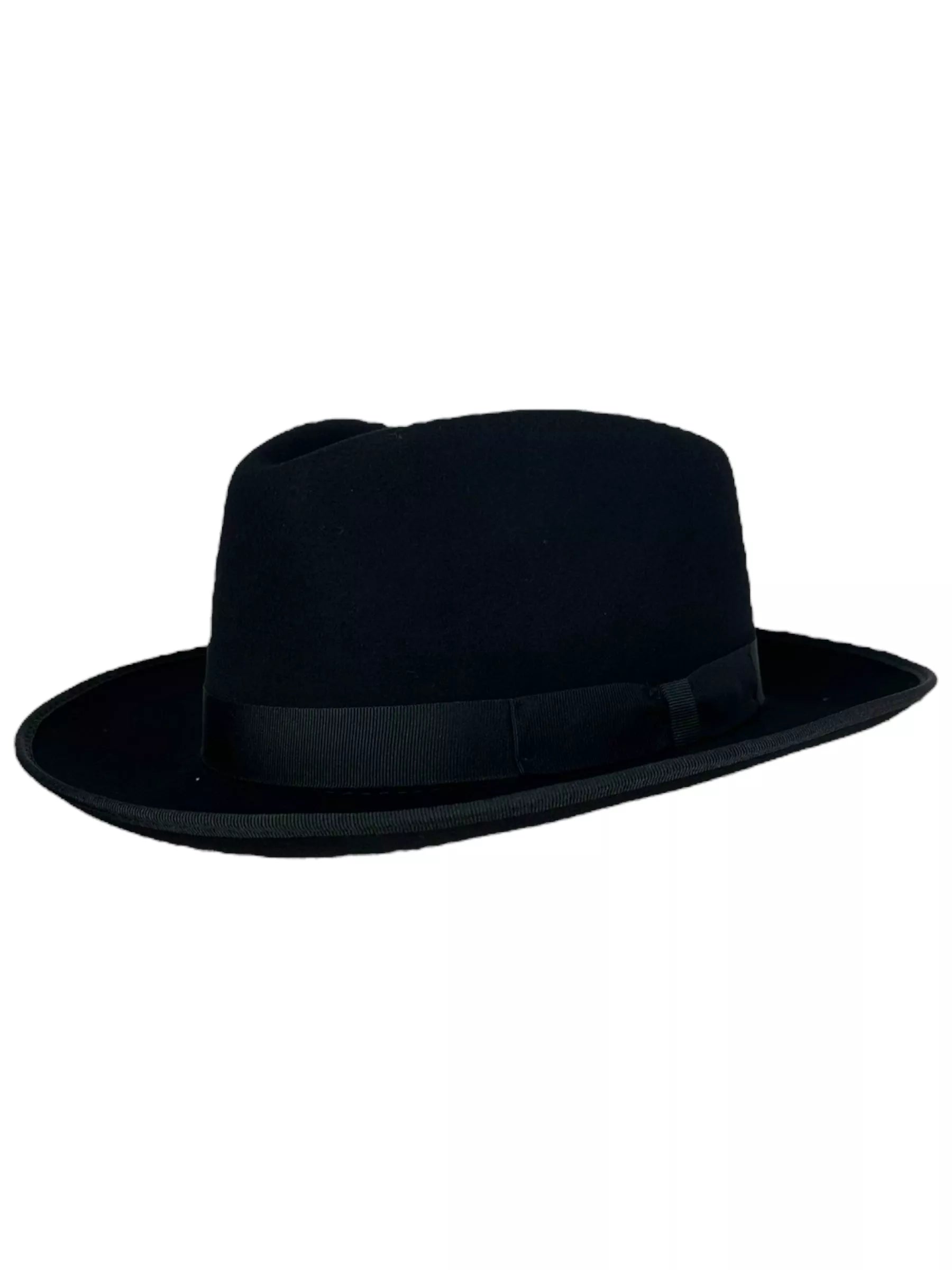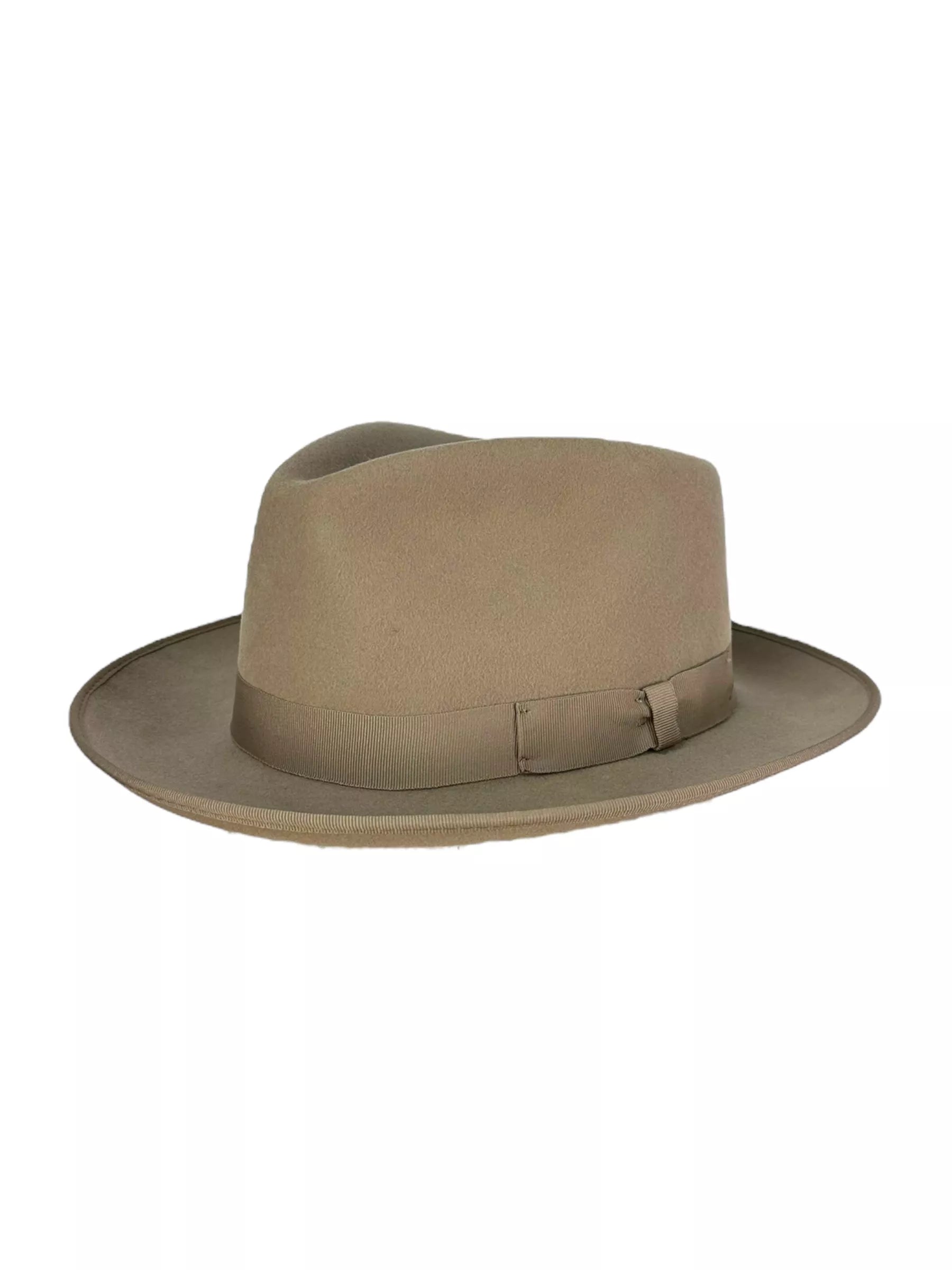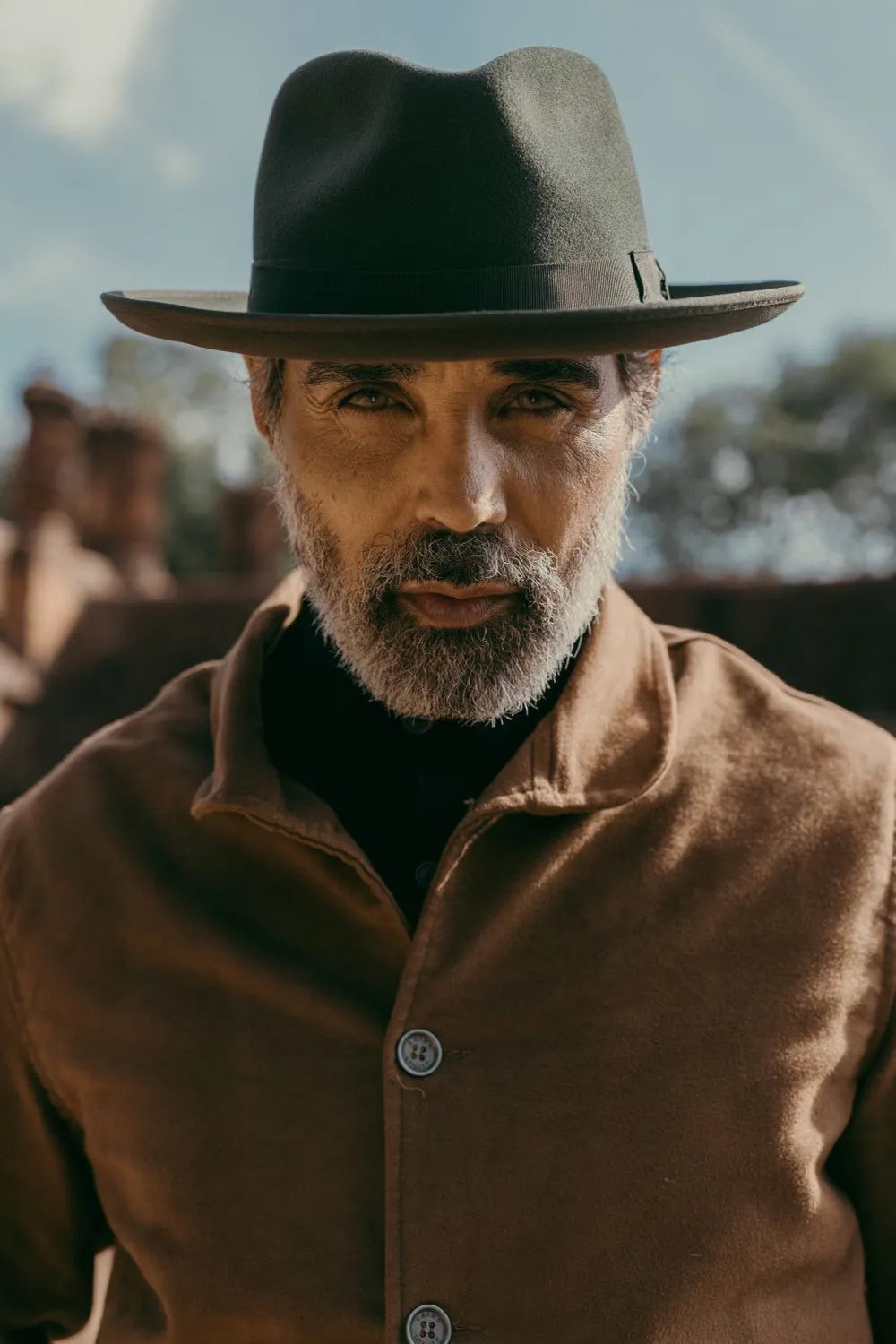Alfred Cashmere Suede Trilby Hat
Alfred Cashmere Suede Trilby Hat
Couldn't load pickup availability
Our best seller, the Alfred Trilby, has always been a testament to quality and style. This season, it takes on a transformative appearance, stepping out in a luxurious cashmere suede material for the very first time. Perfect for the autumn chill, this move is not just about aesthetics. Our transition from fur felt to cashmere suede represents more than a mere change in material – it marks a pivotal moment in our brand's history. Known for the unparalleled quality of our fur felt creations, our relentless dedication to innovation and customer satisfaction propelled us toward the lush comfort and elegance of cashmere suede.
The Alfred Trilby's flattering unisex shape, characterized by a lower crown and a medium-width brim, not only ensures that you cut a dash but also offers protection in the colder season. Beyond its form, the richness of its new material promises unparalleled warmth and a tactile experience that's unmatched, signifying our monumental leap and commitment to evolution while cherishing the ethos of luxury.
This bold move sets a benchmark, redefining our standards and ushering in an era where tradition beautifully intertwines with innovation. Step into autumn with the renewed Alfred Trilby – a hat that is as regal in touch as it is in appearance, and a proud symbol of our passion, persistence, and penchant for the extraordinary. We warmly invite you to join us on this journey and experience the sumptuous embrace of our latest offering.
Cashmere Hat Felting
Cashmere’s rare qualities, luxurious feel and timeless elegance, make it highly desirable for those seeking high-end, comfortable, and long-lasting products.
Cashmere comes from the soft, fine undercoat hair of cashmere goats. It is known for its exceptional softness, warmth, and luxurious feel. The name "Cashmere" is often associated with a region in Northern India called Kashmir, where this fibre was traditionally produced, but it is also produced in several other regions around the world.
Cashmere goats produce a relatively small amount of cashmere fibre each year. The average goat yields only about 4 to 6 ounces (113 to 170 grams) of usable cashmere per year. This limited supply contributes to its exclusivity.
The process of collecting cashmere involves combing or shearing the fine undercoat hair of the goat during the spring moulting season. This process is labour-intensive and requires skill to ensure the fibre is collected without damage.
Cashmere fibres are exceptionally fine and soft, measuring around 14-19 microns in diameter (compared to around 20-30 microns for human hair). This fine texture gives cashmere its silky, luxurious feel against the skin.
Cashmere is known for its excellent insulating properties. It provides warmth without excessive weight, making it ideal for creating lightweight, durable and warm hats. Cashmere, when cared for properly, can last for many years due to their durability, resilience and natural water repellence adding to their value as a luxury but practical investment.
Hat felts and ‘Felting’ has a long and rich history, with its’ continued use in clothing production a testament to its durability, versatility, and the enduring appeal of its unique texture and properties.
Felting is a process of creating a fabric or material by matting and compressing fibres together, typically wool fibre, through a combination of moisture, heat, and agitation. T is an exceptionaly strong fabric and dates back thousands of years.
Felt making is believed to have originated in Central Asia, particularly in areas around modern-day Mongolia and China. Nomadic herders in these regions used felted wool to create clothing and shelter due to its insulating properties, hard wearing durability and because of its structure, natural water repellence
The ancient Egyptians also developed felting techniques and used them to make garments. Archaeological evidence suggests that felted wool clothing was worn in ancient Egypt as early as 6000 BCE. Over time, the knowledge of felting spread along trade routes, such as the Silk Road, to different parts of Asia, Europe, and the Middle East.
Felt making continued to evolve in Europe during the Middle Ages. In northern Europe, felted wool was an essential material for clothing and hats, in regions where it was difficult to cultivate flax or cotton for linen or cotton garments.
In England felted hats really took off when a law was passed in the 16th century requiring all non-nobles to wear a woollen hat to reduce a wool surplus, England’s biggest industry at the time, signified by a ‘Woolpack’ still resident in the House of Commons today.
The process of making Cashmere felted hats is similar to the wool or rabbit-fur versions. The cashmere fibres are laid out in thin, even layers to create a flat piece of cloth about the size of a hat caplen.
The fibres are layered in different directions to create a more stable fabric, then wetting and soaping the fibres helps lubricate them and allows them to slide and mat together more easily.
Rolling and applying pressure to agitate and compress the Cashmere is essential for finishing the felt, and it can take some time and effort.
For making a hat ‘Caplen’ the felt is made into a cone-like shape for ease of later blocking and forming into a hat. Even then, when blocking a hat, it takes great skill, time, patience as well as steam and strong hands to stretch the coned felt over a hat block or mould.
Share

